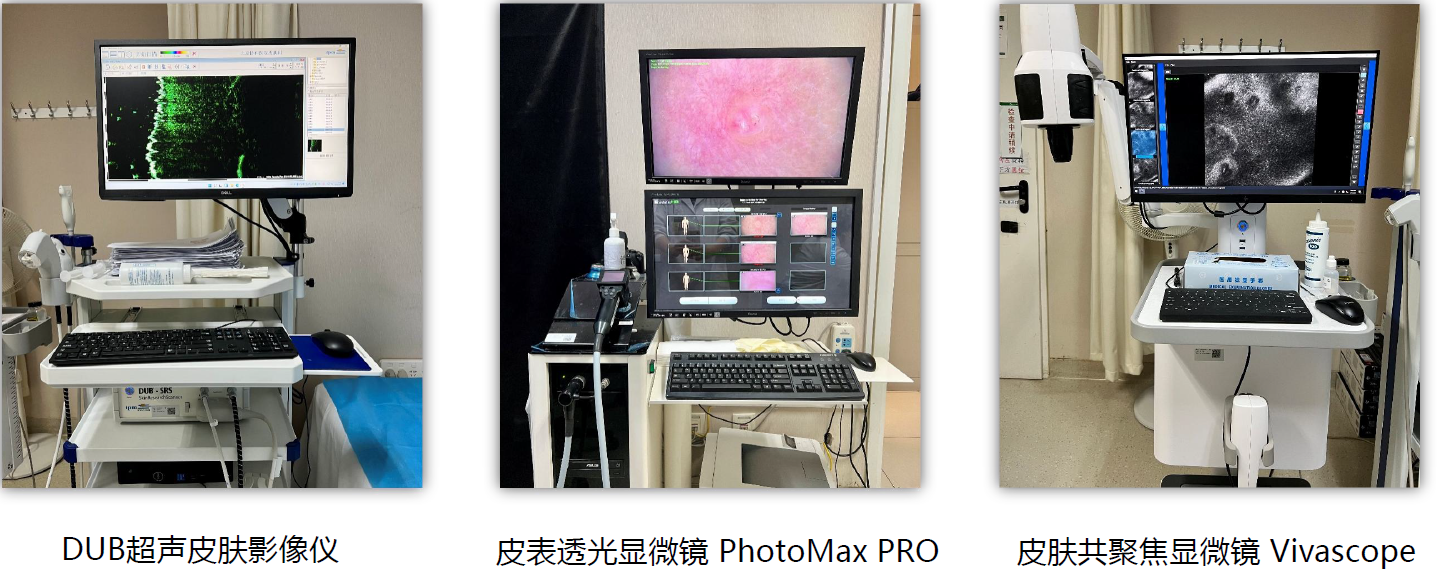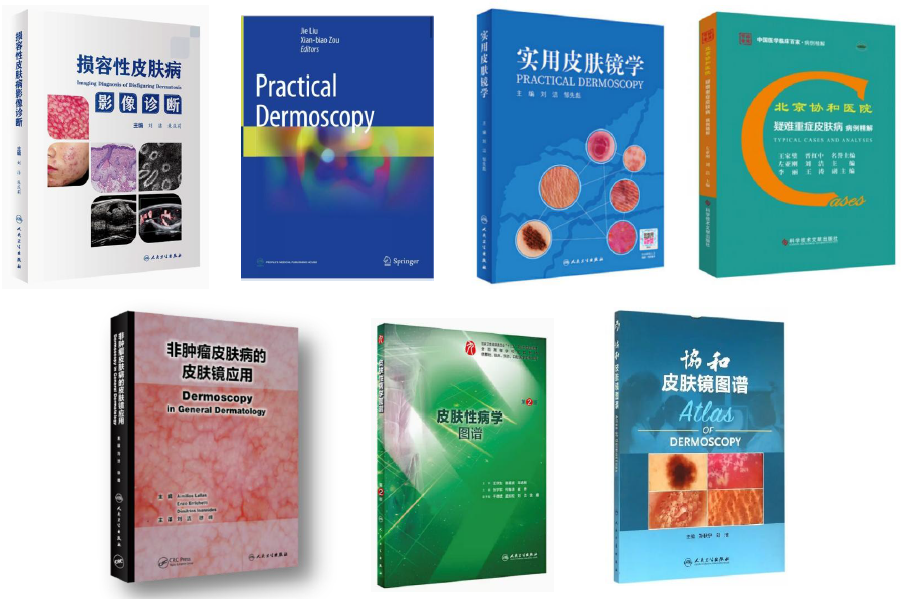AI for assisting in hair loss diagnosis, intelligent risk assessment for generalized pustular psoriasis, and AI-based evaluation of acne severity... These are among the suite of intelligent applications being developed under the “Non-invasive Dermatological Diagnosis Platform Project” (hereinafter referred to as the “Project”), led by Professor Jin Hongzhong and Professor Liu Jie from the Dermatology Department at Peking Union Medical College Hospital. Since the Project's inception in April 2021, a series of groundbreaking applications have been successfully developed and implemented. These non-invasive diagnostic tools not only alleviate patient discomfort and reduce medical costs but also significantly improve the accuracy and efficiency of disease diagnosis, enhancing patients' overall experience and satisfaction with their medical care.
Non-invasive dermatological imaging is an emerging sub-discipline in dermatovenereology. Technologies like dermoscopy, reflectance confocal microscopy (skin CT), high-frequency ultrasound, and multi-dimensional dermatological imaging management systems have been widely applied. These technologies are non-invasive, real-time, dynamic, and repeatable, making them essential tools that bridge the gap between clinical practice and pathology. They assist clinicians in diagnosing diseases and assessing the severity of conditions with greater accuracy than visual examination alone, and some can even examine multiple sites simultaneously, significantly reducing diagnostic time compared to traditional pathological methods. With substantial support from the hospital, the Project has introduced multiple advanced devices that have greatly improved clinical diagnostic efficiency and treatment evaluation.

▲New equipment introduced by the Project
While focusing on common diseases and well-established management applications, the Project team is also taking on the challenge of diagnosing and managing rare and difficult-to-treat skin conditions using non-invasive techniques. For instance, they use dermoscopy and high-frequency ultrasound to observe lesions in different stages of scleroderma, providing valuable insights for treatment and rehabilitation management of the disease. High-frequency ultrasound is also used to “detect” the effectiveness of photodynamic therapy for lichen sclerosus. Besides, the Project team has explored the diagnosis and treatment of rare diseases such as mycosis fungoides. By developing diagnostic models using dermoscopy, they have created new pathways for early diagnosis and accurate differentiation between early-stage mycosis fungoides and inflammatory skin diseases, offering increased support for patients with rare conditions.
The Project has not only promoted the formulation of consensus and guidelines in the discipline but also yielded fruitful outcomes in research papers, academic grants, and academic publications. The team has led the formulation of over 10 consensus statements in the field of non-invasive dermatological imaging, published more than 70 papers on dermatological imaging and AI in internationally prestigious journals, secured over five national and institutional research grants, and authored or translated seven academic books in Chinese or English. Such endeavors have contributed to both qualitative and quantitative advancements in dermatology.

▲Books authored or translated by the Project team
A series of research outcomes by the Project team have been successfully translated and implemented, with multiple intelligent applications now in use for different diseases. These include the Intelligent Imaging Assisted Diagnosis System, AI for Hair Loss Diagnosis, Intelligent Facial Disease Diagnosis Platform, AI for Acne Severity Assessment, Intelligent Basal Cell Carcinoma Diagnosis Platform, and AI for Generalized Pustular Psoriasis Risk Assessment. These tools assist in the diagnosis, evaluation, and long-term management of a wide spectrum of skin diseases, from common to rare ones.

▲Examples of translations from research outcomes
The Project team actively participates in domestic and international academic exchanges, ensuring that innovative results benefit more patients. Professor Liu Jie has served has served multiple terms as a board member and Asian representative of the International Dermoscopy Society, amplifying the “voice of PUMCH” to the global academic stage. The dermatology team regularly hosts the “Dermatological Imaging AI Summit Forum and PUMCH Dermatological Imaging Diagnostic Workshop”, which has attracted over 100,000 attendances both online and offline. These efforts are advancing the intelligent, standardized, and regulated diagnosis of dermatological imaging.
"In the future, the Project team will continue to explore innovations, driving the 'informatization' and 'digitalization' of dermatology. We aim to extensively develop teledermatology and intelligent diagnostics," said Professor Jin Hongzhong.
Written by Wang Juncheng, Jin Hongzhong, Liu Jie, and Wang Jingxia
Pictures courtesy of the Department of Dermatology
Edited by Wang Jingxia
Translated by Liu Haiyan
Reviewed by Wang Juncheng, Zhang Shu and Wang Yao
